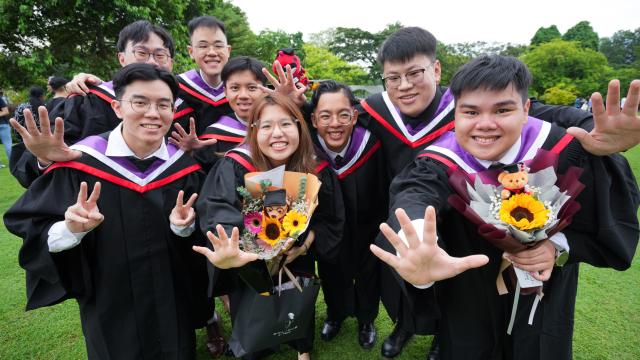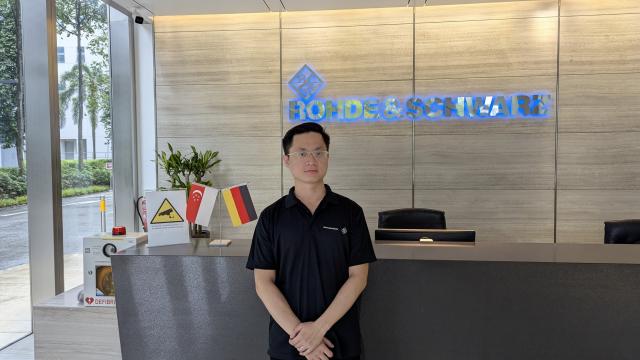Meet two innovators from the Class of 2022 who polished their skills at SIT: Felicia Peh and Clorence Tan from the Food Technology and Sustainable Infrastructure Engineering (Building Services) degree programmes respectively.
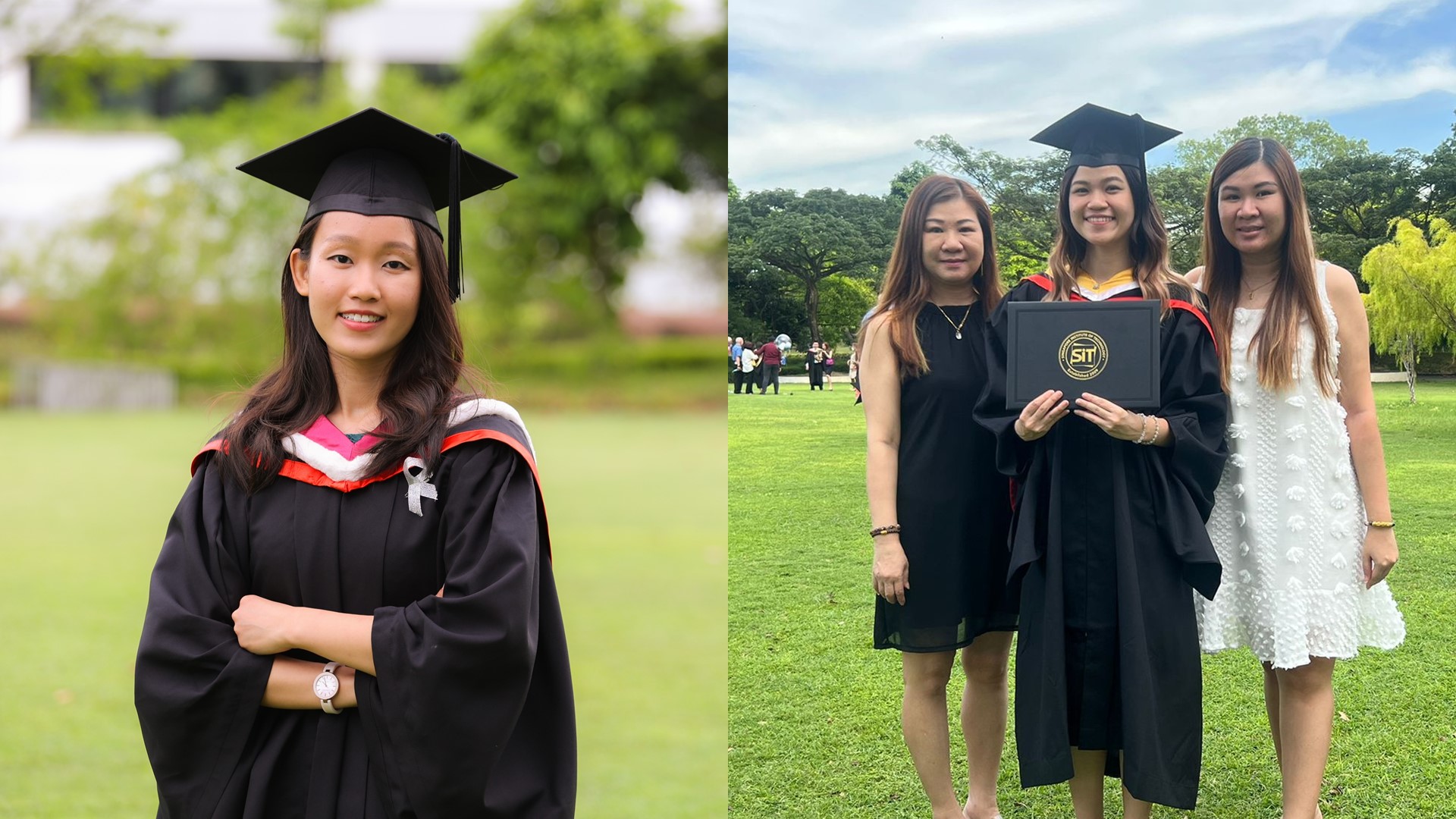
SITizens Felicia Peh (left) and Clorence Tan (right) from the Class of 2022. (Photos: Keng Photography/Wang Zhixiang, Clorence Tan)
On some days, the aroma of home-cooked food and taste of ‘wok hei’ engulfs the senses, triggering a light-bulb moment at the dining table. Other times, a pastel sunset blanketing the sky inspires a significant breakthrough.
From food to buildings, it has been the minutiae of everyday life which helped transform ideas into innovations for Felicia Peh and Clorence Tan.
The mundane sparked magic for both graduates of the Singapore Institute of Technology (SIT), walking a journey taken by many alumni who found their unique personal paths from incubation to innovation at the university.
Both graduates acknowledge that the curricula and support rendered by their professors played important roles in encouraging them in their pursuits.
Felicia said: “The encouraging and selfless professors at SIT did their best for every student, providing us with the greatest opportunity to succeed.”
Food for Thought
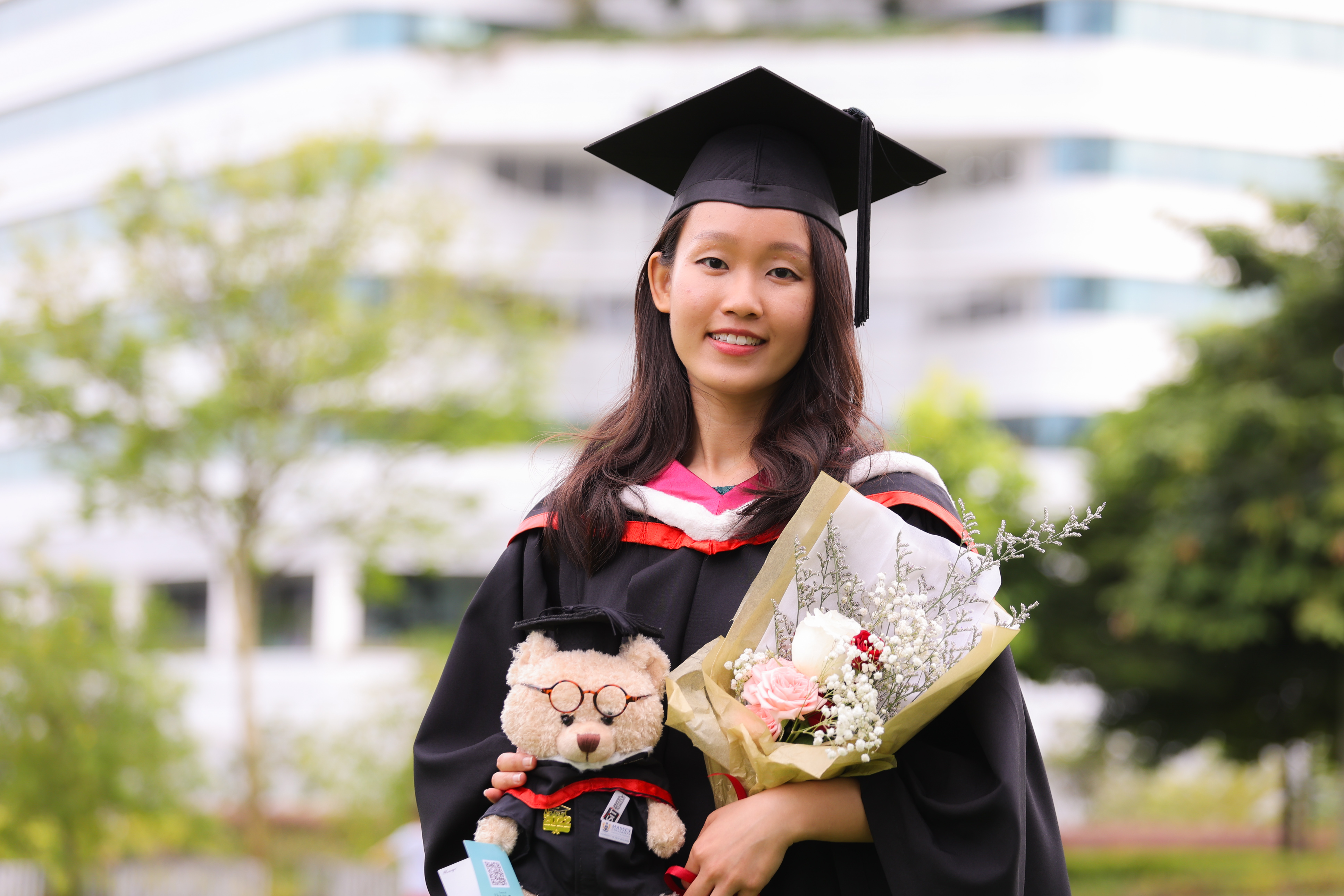
Felicia was conferred her degree scroll on 12 October 2022. (SIT Photo: Keng Photography/Wang Zhixiang)
For Felicia, the university gave her the perfect opportunity to pursue a lifelong interest in food, cultivated since childhood. She recalled the bittergourd in soup and plates of sizzling petai and carrots in the kitchen as a kid. The pungent smells tickled her olfactory receptors. A sprinkle of garnish brought a salty tang. Before long, she found herself shovelling the vegetables onto her plate.
“My family has always been health conscious, so I was quite aware of the importance of eating healthy,” said the 23-year-old, who graduated with a Bachelor of Food Technology with Honours. “I was one of the rare kids that ate every vegetable and fruit.”
Discovering diets extended beyond the home. During grocery runs, she would race along aisles to read nutritional labels on food packaging, even those she could not understand. Years later, it was a no-brainer that she chose SIT for its applied learning curriculum.
Food became a puzzle that needed to be solved. For instance, her seven-month Integrated Work Study Programme (IWSP) with food and beverage giant Nestlé last year allowed her to study the possibility of developing different flavours for plant-based meat alternatives through fermentation.
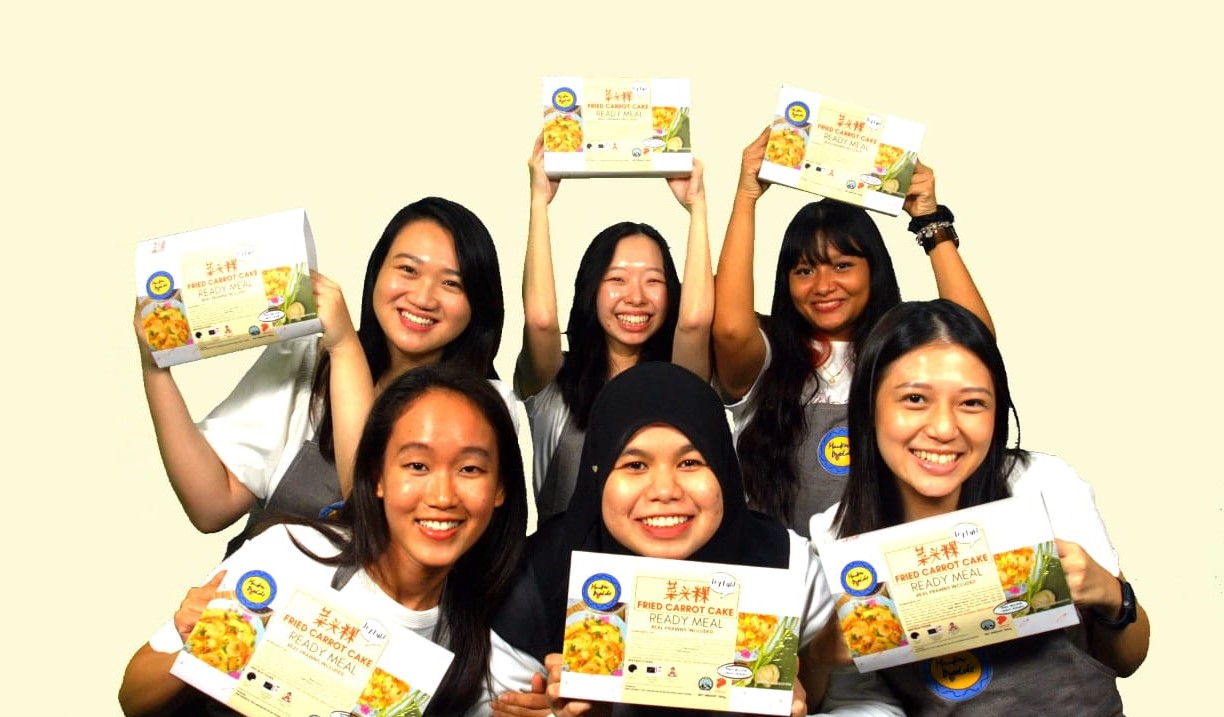
Felicia (bottom row, left) and team refined the texture of frozen stir-fried carrot cake for their final-year project. (Photo: Felicia Peh)
She then swapped proteins for carbohydrates in her final-year group project, partnering with Singapore food company Fei Siong Group to create a frozen stir-fried carrot cake. Felicia and her team used their knowledge of starches to replicate the original texture and flavours that would have otherwise been altered by sub-zero storage conditions.
“Fei Siong said it tasted quite good, but I’m not sure if they will launch it,” she said with a laugh.
She applies these competencies today as a full-time research engineer at SIT, where she aims to contribute to Singapore’s ‘30 by 30’ goal – to produce 30 per cent of the nation’s food by 2030. Her work involves studying the technical feasibility of creating plant-based seafood in collaboration with local food manufacturers.
Sky-High Engineering
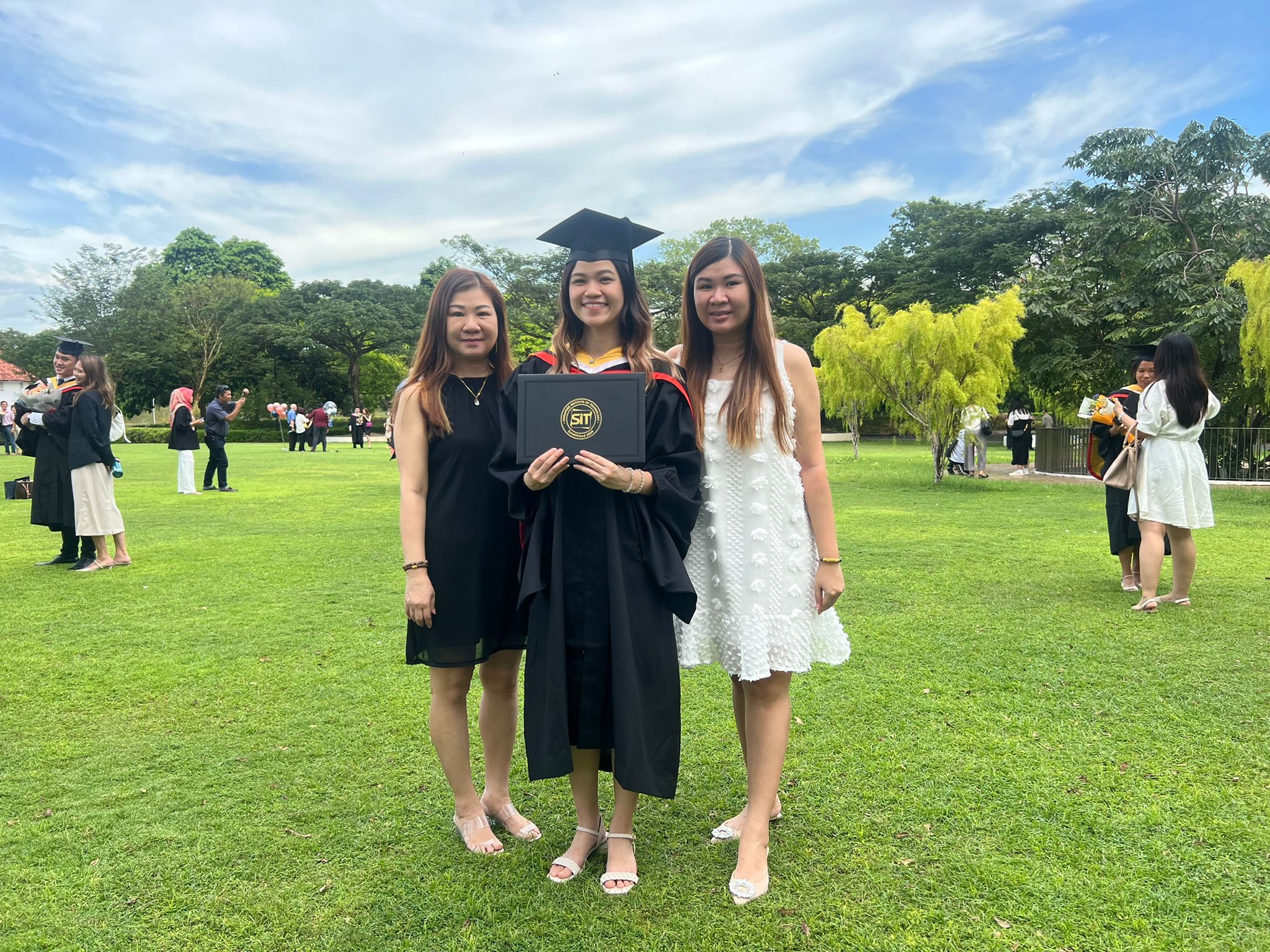
Clorence (centre) with her mother (left) and sister (right) at her Graduation Ceremony on 13 October 2022. (Photo: Clorence Tan)
For Clorence, the Marina Bay Sands hotel was an engineering marvel that seemed to rise from the seas and into the sky. She remembered being high above the hotel tower once during an internship in polytechnic, in a room just beneath the infinity pool, where metres of pipes lay. Like roots transporting nutrients, they facilitated the water flow to all parts of the hotel.
She was fascinated by the engineering which went on behind the glitz of the iconic architecture. “It was quite beautiful and interesting to see how that system worked,” said the recent graduate of SIT’s Master of Engineering Technology in Sustainable Infrastructure Engineering (Building Services)*.
Sustainability in infrastructure was a foreign concept when she embarked on her degree programme, she admitted. But ask her today, and she will tell you how positioning buildings according to the wind direction helps people stay cool longer.
Yet, despite studying engineering systems within buildings, learning was never confined to four walls. Her year-long IWSP at engineering consultancy, Beca, exposed her to designing air-conditioning and mechanical ventilation systems. The design and calculation skills that came with the stint have helped her land a full-time job as a mechanical engineer.
“These skills are a must-know in consultancy, and during the interview with my current company, I was able to answer their questions without difficulty,” she said.
A New Challenge
But back in university, she sought a different challenge. For her eight-month capstone project, she chose to design an outdoor urban farm for SIT@Dover campus. Her research involved using a lighting simulation to determine if there was sufficient daylight for plants to grow, as well as assessing the performance of crop growth.
There was just one problem: she had no experience with the required software. So, when SIT organised a series of workshops to help students, she spent nights toggling with programme settings to bridge the gap.
“I wanted to do something different, to explore and see if I’m suitable for other things,” she said.
The dynamic projects in SIT reinforced the importance of embodying the SITizen-DNA ‘Able to Learn, Unlearn and Relearn’ – the methods taught in class may not necessarily be the same ones used in the workforce.
“When you go out to work, you need to be adaptable and open-minded to be successful,” she said. “Learning is one thing; applying is another.”
* The programme is now known as Master of Science in Mechanical Engineering.















![[FA] SIT One SITizen Alumni Initiative_Web banner_1244px x 688px.jpg](/sites/default/files/2024-12/%5BFA%5D%20%20SIT%20One%20SITizen%20Alumni%20Initiative_Web%20banner_1244px%20x%20688px.jpg)

